Product Description
(This product is part of my Professional Organizer Training proram. Click here for a full description of the program, and the various product and purchase options.)
If you want to succeed at running a Professional Organizing company, you need to have the right tools — and that includes practical financial tools like invoices, quote sheets, pricing plans, budgets, and tracking forms. But you don’t have to worry about creating everything from scratch, because I’ve put together the perfect bookkeeping “jump-start” kit.
Everything You Need To Manage Your Money
This kit includes 33 pages of forms, templates, and sample documents designed specifically for Professional Organizers. Each one is fully customizable — no password-protected PDFs, no read-only files, no re-creating the wheel. Edit any word or clause to suit your needs and preferences. Change the font or margins, if you like — it’s yours to do with as you wish! There is even dedicated space on every public document for your logo and company information. And fill-in-the-blank spots let you know where you need to make a business policy decision. You will find yourself using these documents over and over again in the financial side of running your business:
- Invoice Template For Hourly/Daily Jobs (billing your clients doesn’t have to be a hugely involved affair involving quotes and bills and other statements generated by a complicated computerized bookkeeping program — just keep copies of this simple form in your briefcase and write one out for the client as you finish each session — this format accommodates any hourly/daily job)
- Quote Form For Per-Project Jobs (when charging an hourly rate, most organizers don’t quote a total price for a job — but when charging a per-project fee, you need to be able to calculate and estimate both how long it will take and what you will charge for the work, as well as guarantee that both parties agree to the terms of the quote — this form gives you the tools to do just that, and is a very professional piece to present to a client along with your formal proposal)
- Invoice Template For Per-Project Jobs (while most organizers bill by the day or hour, sometimes you need to be able to quote and charge for a flat rate per-project job — this simple invoice allows you to record all of the pertinent details regarding the project, as well as keep track of deposits and timed payments)
- Hourly Tracking For Per-Project Jobs (just because you’ve quoted the client a flat price and number of hours for the job doesn’t mean that you’re always going to hit the mark — it’s important for you to keep track of how long those per-project jobs actually take you, compared to what you quoted and charged — this form will give you the information you need to provide more accurate quotes in the future, and guarantee that your fees adequately compensate you for your time)
- Pricing Calculator (you may think that deciding on an hourly rate for your services is a confusing and complex process, but it doesn’t have to be — your base rate has nothing to do with what competitors are charging, your market, specialization, or even level of experience — first and foremost, you need to know that your fee is in line with the salary you want to earn, the number of hours a year you wish to work, and your monthly expenses for running the business — once you know where you stand with regards to those issues, you can adjust your fee to be in alignment with the “going rate” and your expertise — this worksheet will help you do exactly that)
- Pricing Chart For Hourly Rates (this quick reference chart will show you exactly what hourly rate you need to charge to earn any salary between $15,000 and $300,000 a year, depending on the number of billable hours per week that you want to work)
- Pricing Chart For Shopping Fees (this quick reference chart will show you exactly how much you will earn in “extra” fees if you charge your client each time you shop for supplies — this system approaches shopping fees from the perspective that a percentage of the amount spent is a more equitable approach than an hourly rate, easier to calculate and more fair to both the organizer and the client — and with this chart, you can choose a rate that adequately compensates you for the additional time and effort)
- Pricing Chart For Travel Fees (this quick reference chart will show you exactly how much you will earn in “extra” fees if you charge your client for travel beyond a certain set distance — this system approaches travel fees from the perspective that a per-mile rate is a more equitable approach than an hourly rate, easier to calculate and more fair to both the organizer and the client — and with this chart, you can choose a rate that adequately compensates you for the additional time and effort)
- Supply Shopping List (part of being a good business person and a good Professional Organizer is having the right tools — this supply list includes everything that you will need in a solopreneur business, from office equipment and supplies to basic software and technology to outfitting the toolkit that you take on appointments — great for not only helping you make sure that you haven’t forgotten anything, but also for working out a budget so you know what it all will cost you)
- W-9 Form (if you are paid more than $600 in a year by a client, he/she must provide you with a 1099 at the end of the year — the same is true if you pay more than $600 to any contractor or vendor you use — this W-9 form is the official way of providing or gathering important tax ID or social security information for the creation of that 1099 — you can get a PDF from the IRS website, but I’ve provided it for you here in jpeg format so it can be edited directly from your computer — just type in your information, insert your signature as a graphics file, and save on your hard drive — whenever someone needs your W-9, you can easily email it to them without having to print and mail each time)
- Simple Expense Tracking Form (you may use a computerized accounting program for tracking your business expenses, but for many small businesses, that’s more expense and trouble than it’s worth — this easy-to-use form allows you to track your basic categories of expenses each month and have a year-end snapshot of how much you’ve spent on each type of item)
- Simple Income Tracking Form (if you’re going to determine whether your business is profitable, you have to know how much money you are bringing in — but many organizers just deposit their fees in the bank, without taking the time to tally up their monthly income — this easy-to-use form allows you to track your basic categories of income each month and have a year-end snapshot of how much you’ve made on each type of service)
- Annual P&L Form / Balance Sheet (once you have tallied your expenses and income, figuring out where your company stands financially is fairly simple — this form makes it easy for you to identify your assets and liabilities and to see whether you came out in the black or in the red, giving you the information you need to be able to make the appropriate changes in your financial plan for the next year)
- Annual Business Budget (some people treat business expenses differently than personal ones, just because they get a tax deduction for some or all of them — but you need to be just as smart with your company money as with your personal checkbook — tax deductions are no reason to spend beyond your means and go into debt — this form offers an easy way to set up a budget for your company and make sure you are running your business finances according to those guidelines)
- Financial Projection Form (knowing how much you made or spent in a year’s time versus how much you wanted to make or spend is important — but even more important is the ability to look at several years’ worth of data and make solid projections about the future — this form will help you analyze your company’s track record and figure out where you should be in the next year, 3 years, 5 years, or 10 years if growth continues at standard rates)
Having an attorney, business coach, or assistant create all of these documents for you from scratch could easily cost you several hundred dollars — but why would you want to when it’s all been done for you? Instead of wasting your precious time on administrative chores, wouldn’t you rather hit the ground running and focus your attention on serving your clients? This entire kit is available for only $35, and for an even better bargain, check out the “Complete Organizer’s Toolkit Combo” — which includes the “Business Toolkit,” the “Appointment Toolkit,” the “Bookkeeping Toolkit,” and the “Marketing Toolkit,” for the discounted price of $100 (a $40 savings!) And if you’re looking for a more comprehensive solution, remember that these toolkits are also included with the purchase of my training / coaching / mentoring programs and discount start-up packages.
Click here for reuse options!Copyright 2014 RamonaCreel.com
***Please note that once we have sent you the information (the intellectual property) there is no way to return it. So please be sure about your decision before you sign up. for these programs There are no refunds or exchanges on training program courses or coaching sessions, once they have been paid for.
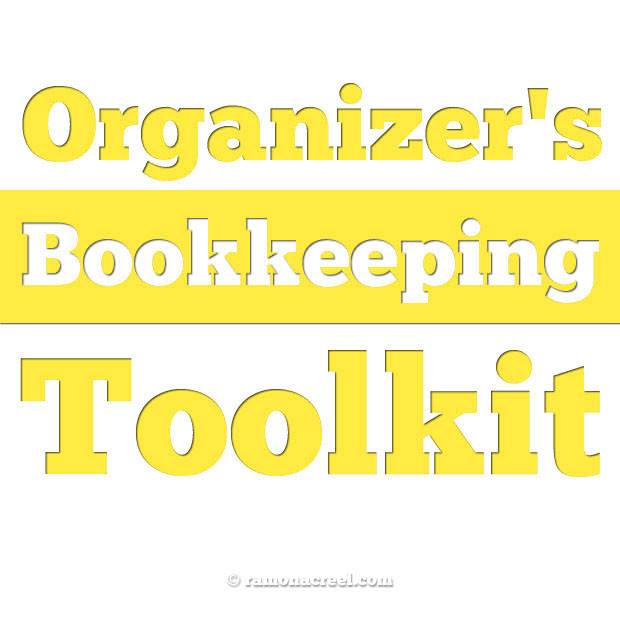
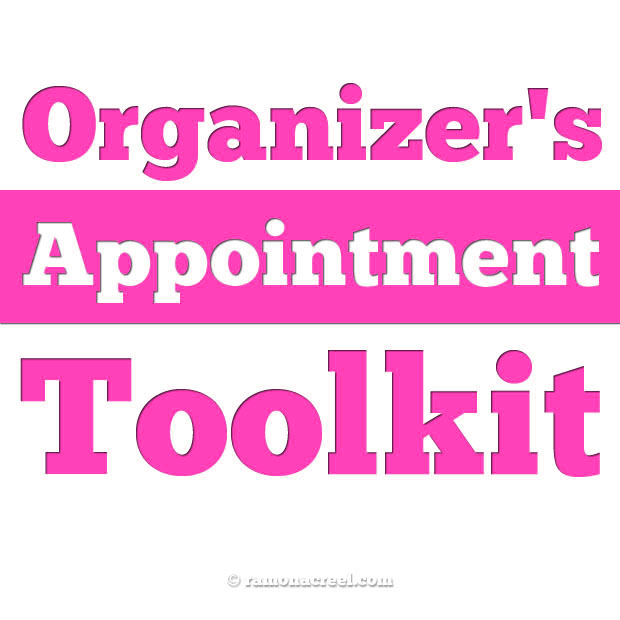
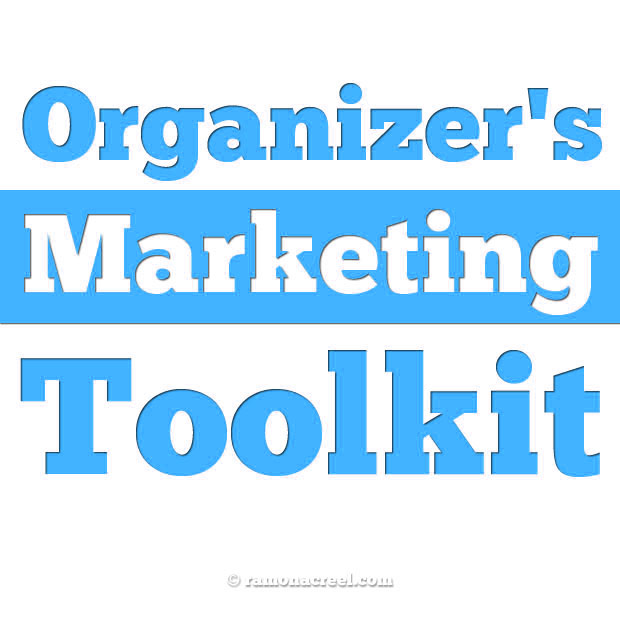
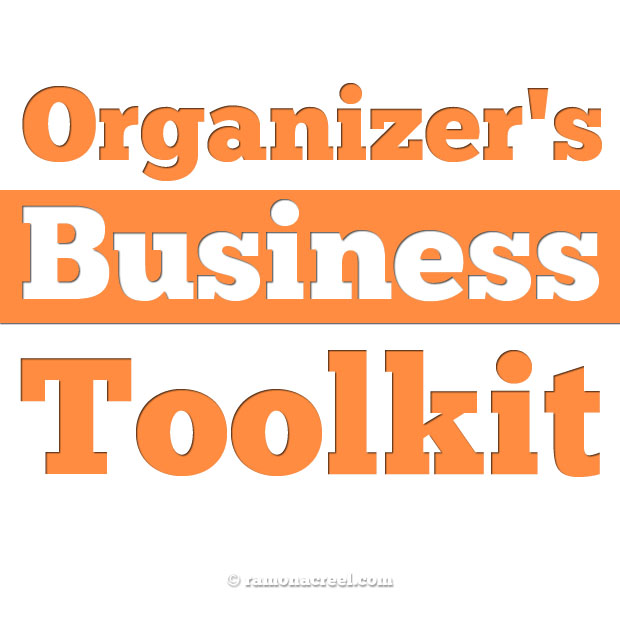
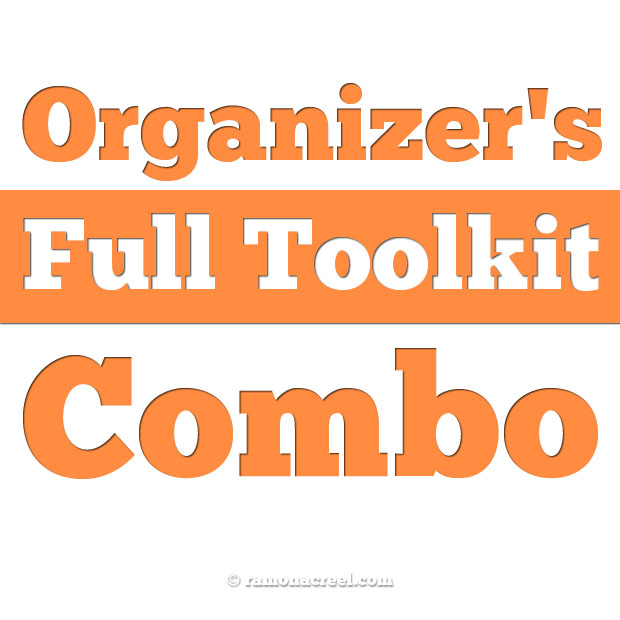
Reviews
There are no reviews yet.